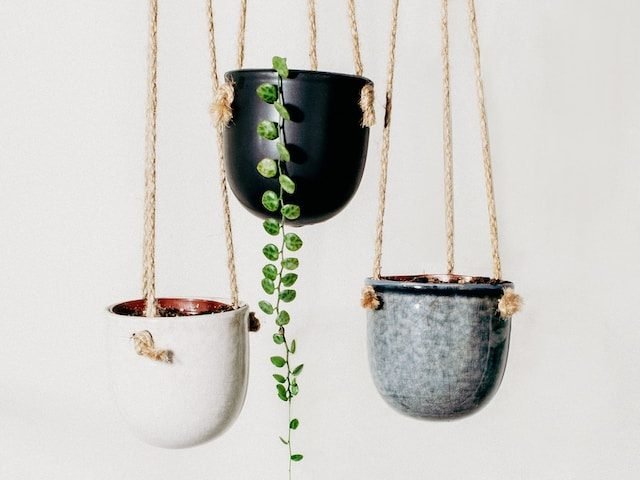
Our Favourite Fast Growing Houseplants
There’s something a little bit disappointing when we are left waiting months on end for just one new leaf to appear on some of our houseplants, which is why we have curated this list of the top fastest growing houseplants. During the growth period, you’ll see new leaves popping out of these ones all the time, as well as offshoots that you can propagate and sometimes even flowers.
You must bear in mind though that these houseplants won’t grow all year around and the rate of growth will drop during autumn and winter as your plant goes dormant. But with the right care, you’ll see plenty of new growth as soon as spring arrives.
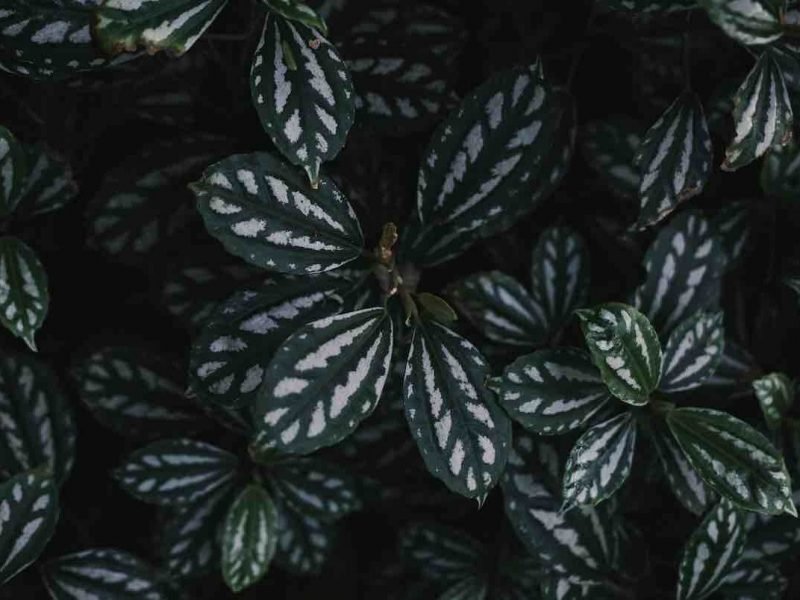
Aluminium Plant
Pilea cadierei
This low maintenance, fast-growing houseplant can sometimes be quite underrated in the houseplant world. Each leaf on an Aluminium Plant has its own unique set of silver streaks and splashes, so it’s easy to see how it got its name!
Native to China and Vietnam, this houseplant tends to spread out rather than grow tall. The one thing to be wary of is its root system as it can grow so extensively that it can often break through the pot so you want to make sure you’re repotting this plant yearly!
When it comes to care, bright but indirect sunlight and moderate amounts of water will keep them happy. They are quite forgiving and easy to please so keeping this one thriving doesn’t need a lot of work so we often recommend this as a great entry-level plant.
Find out more in our Aluminium Plant care guide.
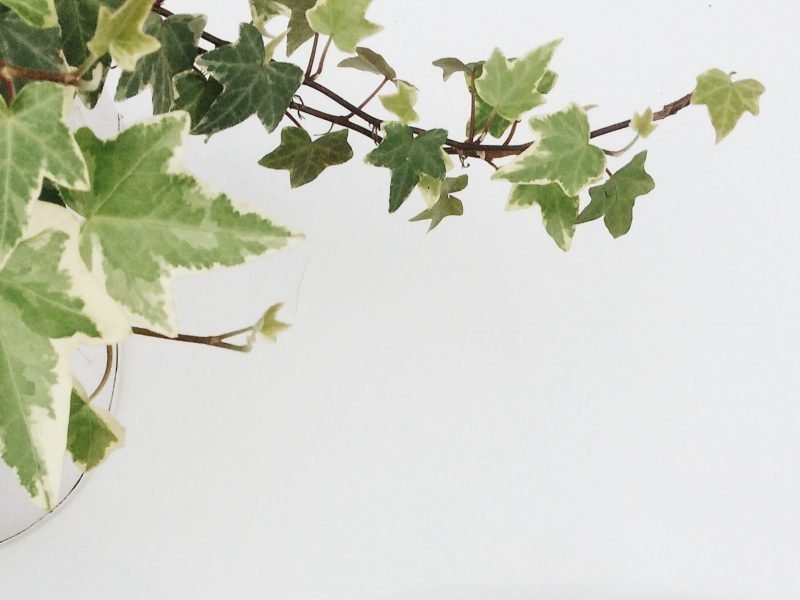
English Ivy
Hedera helix
Although they are most commonly known as outdoor plants, you can very successfully grow an English Ivy indoors as long as you give it enough light. We are obsessed with the white variegated English Ivy but if not given enough sunshine, the new leaves will lose all of that variegation.
Included in the NASA Clean Air Study, the English Ivy is great at removing toxins from the air so we recommend having this around your home. They are also believed to sometimes be able to improve allergy symptoms so as well as looking lush, they have great benefits for us too. As they are a super fast-growing plant (if the conditions are right), you’ll want to place them on a high shelf making sure they have enough space to cascade downwards.
Find out more in our English Ivy care guide.
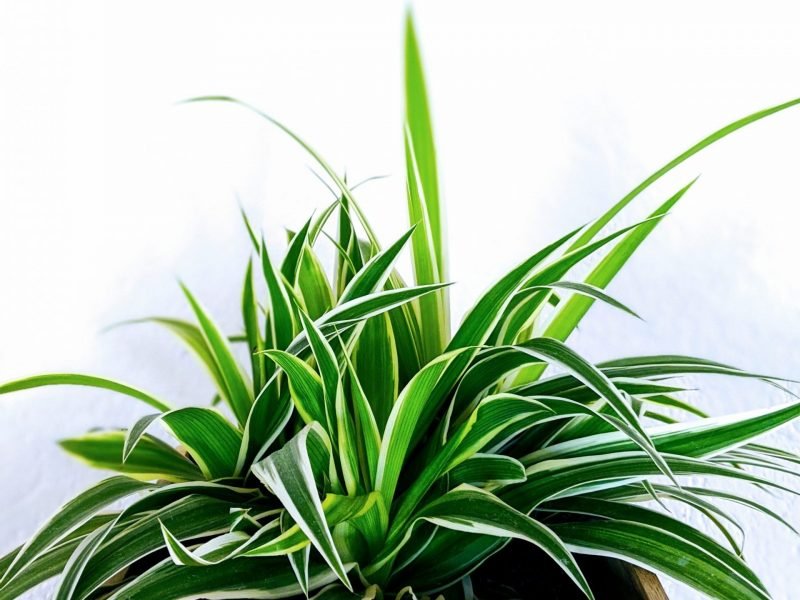
Spider Plant
Chlorophytum comosum
Spider Plants are the perfect plant for a houseplant beginner as they are super easy to care for, grow pretty quickly, and produce an abundance of spider babies which can be propagated in seconds.
The best thing about Spider Plants is that you would really have to try to kill them as they adapt to and survive in most environments and don’t mind being a little neglected. They even show you when they need more water by going quite light green. But after a little bit of water, they spring back to full health in minutes.
As your plant matures, you’ll start to see it sprouting little spiderettes which you can choose to remove from the plant to create new Spider Plants. They really are the gift that keeps on giving.
Find out more in our Spider Plant care guide.

Marble Queen Pothos
Epipremnum Pinnatum
There are so many different varieties of Pothos plants, all with slightly different leaf variegation but the Marble Queen is definitely one of our favourites. Getting its name from the cream marble-like variegation on its leaves, it’s an easy-going, hardy and low light loving plant that can adapt to most spots in your home.
The Marble Queen Pothos is a pretty fast-growing plant so make sure you have enough space for it to mature. You can choose to grow them as trailing plants with long cascading vines or vertically by attaching them to a moss pole. Pothos plants are unfortunately toxic so you’ll want to keep them away from pets and small children who might try and nibble on the low hanging leaves.
Find out more in our Marble Queen Pothos care guide.
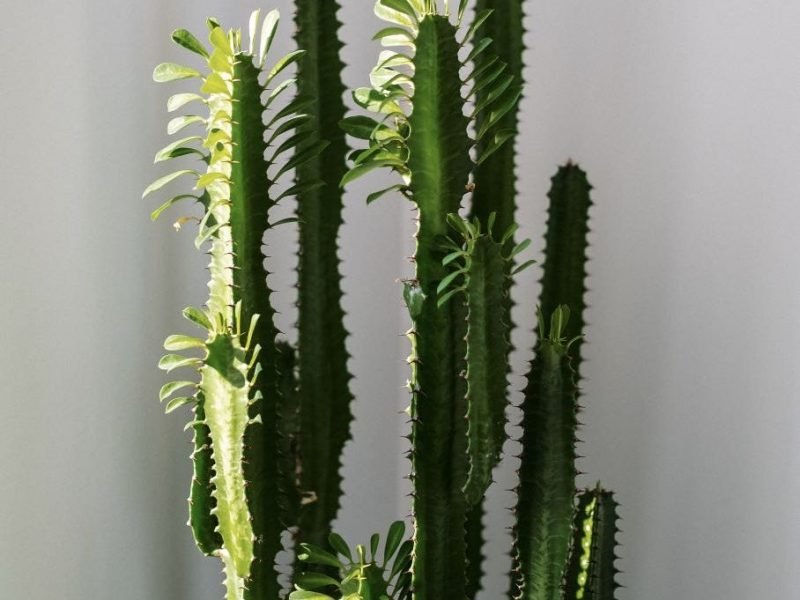
African Milk Tree
Euphorbia trigona
Although they may look like a Cactus, the African Milk Tree is actually a succulent, making it drought-tolerant and highly sensitive to overwatering. This plant gets its name from the white sap that is found in the leaves. Be careful though as this sap is highly toxic so make sure you handle this plant with gloves and keep it away from small children and pets.
You might not associate succulents with fast-growing characteristics, but if you nail the environment, your African Mask Plant can reward you with several inches of new growth pretty quickly. So as succulents go, we’d definitely consider this fast growing!
These plants thrive in bright direct sunshine and hate cold drafts so it’s important to find the right spot for them in your home. But once the environment is right, they need very little tending to and will reward you with plenty of luscious growth. During the summer months, these plants can grow quite quickly which makes them quite unique for a succulent!
Find out more in our African Milk Tree care guide.
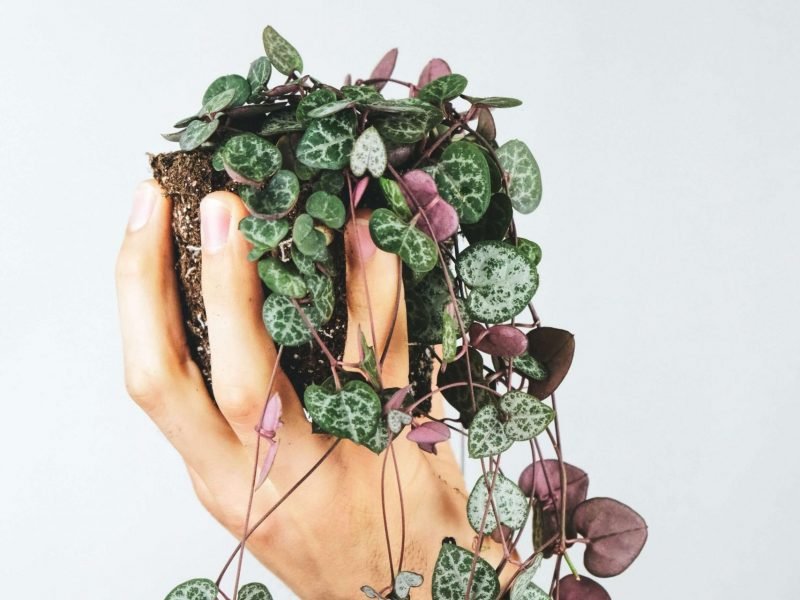
String of Hearts
Ceropegia woodii
Native to South Africa, the String of Hearts should be top on your list for trailing houseplants. You don’t get much more unique than their speckled heart-shaped leaves. The other thing we love about the String of Hearts is that it’s such a fast grower over the spring and summer months, you’ll blink and there will be two new leaves popping out somewhere.
The String of Hearts is a semi-succulent plant meaning they don’t need much water, otherwise, it’ll cause their delicate shallow leaves to rot pretty quickly. Oh, and because they have such shallow roots, you won’t need to repot for a very very long time.
It makes the perfect plant for hanging down shelving, and because its pet friendly, you don’t need to worry about it ever becoming too long!
Find out more in our String of Hearts care guide.
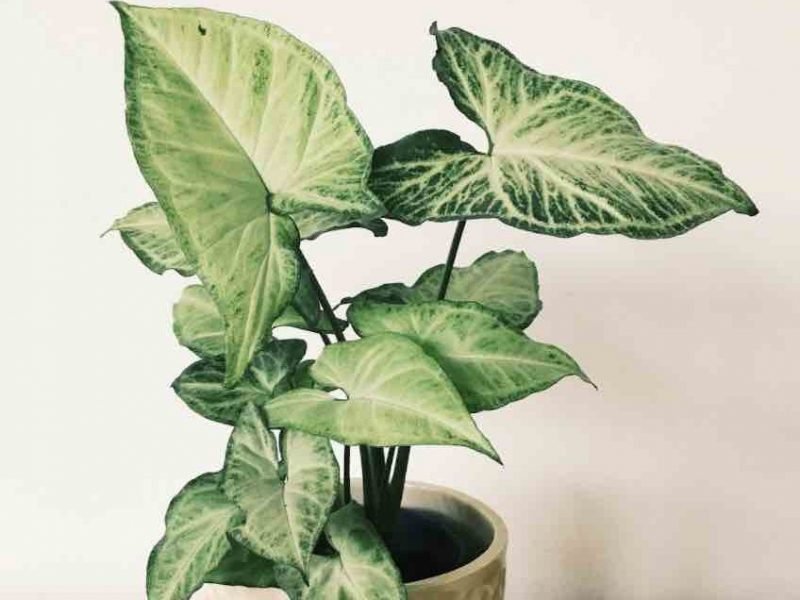
Arrowhead Plant
Syngonium podophyllum
Native to the tropical rainforests of Central and South America, the Arrowhead great plant to have in your collection. When fully grown, they can reach nearly 2 meters tall with large leaves that can have a variety of colours and variegations.
As you can imagine, the Arrowhead likes warm and humid environments. Letting the soil dry out between waterings is a great way to mimic their natural habitats and making sure they have bright, but indirect light will stop the leaves from burning.
With them being a little pickier over humidity and placement, we wouldn’t always recommend them for a starter houseplant. They’re also mildly toxic to pets, which doesn’t make them the most friendly for households with cats or dogs.
Find out more in our Arrowhead Plant care guide.

Peace Lily
Spathiphyllum wallisii
There’s a reason that Peace Lilies are so popular, and it’s not just because of their incredible white flowers. They are super low maintenance plants that can adapt and thrive in most homes. They can tolerate all light levels which is super rare for houseplants.
Our favourite thing about the Peace Lily is that it really helps us plant parents out by drooping its leaves when it really needs water. This can help you spot underwatering before it’s really a problem. Within minutes of watering, the leaves will perk up – it’s pretty cool! And if we haven’t sold you on the Peace Lily yet, then you should probably know that they are also one of the best plants at purifying the air and removing chemicals from your home!
Find out more in our Peace Lily care guide.
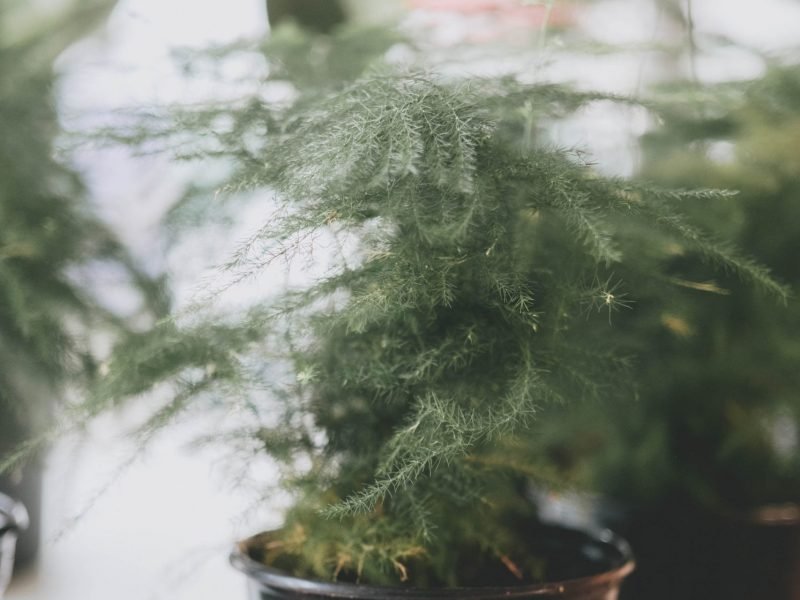
Asparagus Fern
Asparagus Setaceus
The Asparagus Fern is such an elegant little houseplant – and although they look like they’ll be hard work to keep happy, they’re actually pretty simple to care for. Given the right conditions, they can grow extremely quickly and you’ll find new stems popping up every week. In fact, they grow so quickly that new stems can sometimes mature in as little as 24 hours!
They aren’t too fussy on light conditions or watering schedules, but humidity is a must for them. Make sure to give them a spray with a mist bottle every 3-5 days or place near a humidifier to keep them happy in the long term. The leaves and stems will yellow if they aren’t happy, if that happens to you then just give your Asparagus Fern another spray down and a little extra water.
Find out more in our Asparagus Fern care guide.
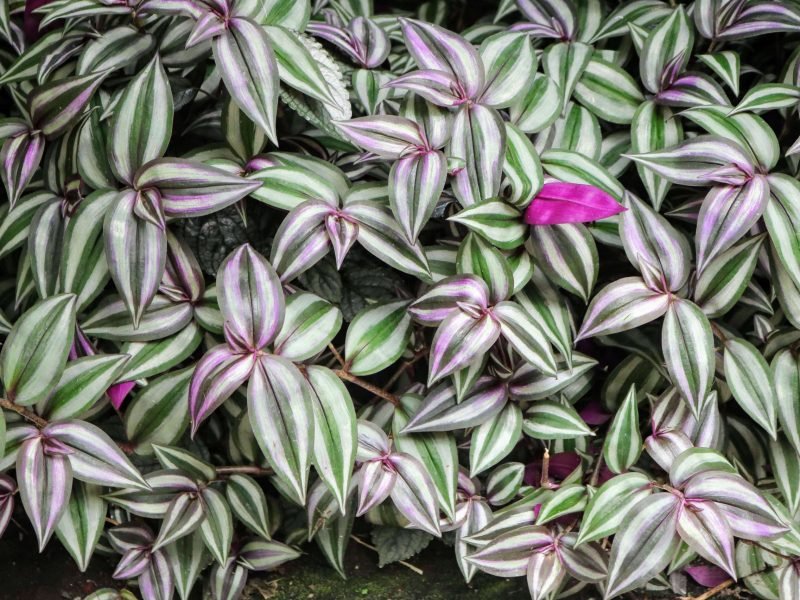
Inch Plant
Tradescantia zebrina
Also known as the Inch Plant, we haven’t yet come across a faster-growing or easier to propagate houseplant. Native to the tropics of Mexico and South America, these plants offer something different with their purple and silvery leaves that transcend out of the pot.
Growing these indoors helps keep their growth more contained whilst still giving that wilderness feel which we love. Caring for these plants is also super easy as all they need is ample light and moderate water. They are quite forgiving though so won’t give up straight away if something’s a little off.
These plants are great for hanging planters or when placed on shelving so you can really make the most of those incredible vines. They can be mildly toxic though so you’ll want to keep them away from pets.
Find out more in our Inch Plant care guide.



